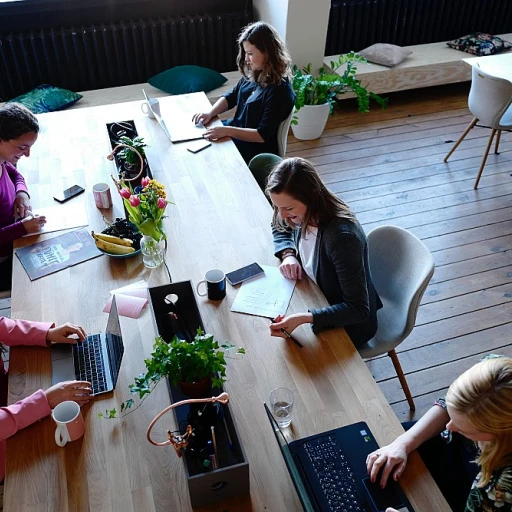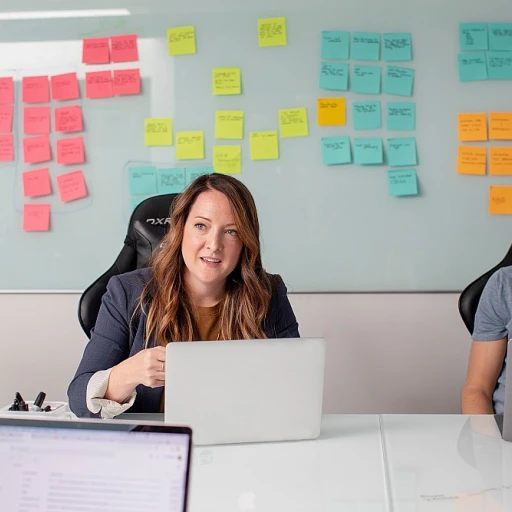
Understanding the Need for Office Refurbishment
Identifying the Triggers for Change
Understanding the need for an office refurbishment starts with recognizing the evolving demands of the modern workplace. Businesses face shifts in operational dynamics, often necessitating a contemporary workspace that is both efficient and engaging. As employees adapt to new ways of working, so too must their environment adapt to facilitate productivity and comfort.
Office interior refurbishments aren't solely about aesthetics or keeping up with design trends; they are a strategic investment in the business. Disruptions in business operations during refurbishments need careful management, as the goal is minimal disruption while ensuring a sustainable, efficient environment.
Before diving into a refurbishment project, consider whether the commercial office can accommodate current and future technology needs. An interior refurbishment should align with technological advancements, enhancing the functionality of the office space and keeping the team engaged. This correlation is essential as it underpins the overall success of the office fit.
A tailored approach to space planning ensures that the evolving nature of work, like remote collaboration or hybrid models, is adequately supported. Transitioning to a flexible workspace requires strategic planning to optimize the use of available space while providing a conducive environment for personnel and office furniture.
For businesses considering a commercial office refurbishment, evaluating these factors will help set the foundation. Recognizing these needs can lead to a smoother, more rewarding transition, benefiting both the employees and the organization as a whole.
Key Considerations for a Successful Refurbishment
Essential Elements for Office Transformation
Embarking on an office refurbishment project requires detailed planning and a clear understanding of various critical elements that can significantly impact the outcome. Here are some key factors to consider to ensure the successful transformation of your workspace:- Thoughtful Space Planning: Careful consideration of the office space is essential. Assess the current layout and identify areas for improvement. Streamlining the design-build process by focusing on efficient space planning will enable optimal utilization of your commercial office and accommodate future growth.
- Balancing Functionality and Aesthetics: The office fit should marry functionality with appealing design. Selecting the right office furniture and workplace layout can enhance productivity while creating an inviting environment for employees and clients alike. It's crucial to choose a style that aligns with the company's brand and values.
- Budget and Time Management: Develop a realistic budget that encompasses all aspects of the refurbishment office, from materials and labor to unexpected expenses. Efficient project management and planning will help minimize disruption to the business.
- Addressing Minimal Disruption: It's essential to plan for a workspace transformation with minimal disruption to day-to-day operations. Consider strategies like phased renovations or using alternative spaces during refurbishment to ensure the continuity of business activities.
- Engaging with Professional Services: Enlist professional refurbishment services that provide expertise and support throughout the refurbishment project. Their insights can help avert common pitfalls and ensure a seamless transition to the new office interior.
Balancing Tradition and Modernity in Design
Striking the Right Balance in Office Design
Revamping an office space is not merely about aesthetics; it's an essential aspect of creating a conducive working environment. To ensure a successful refurbishment project, one must strive to blend traditional elements with modern design sensibilities. This approach not only respects the company's heritage but also aligns with contemporary trends. Traditional office designs often evoke a sense of structure and formality. While these values are crucial, there's a growing need for flexible and dynamic workspaces today. Modern designs emphasize openness, comfort, and collaboration, reflecting changes in the way businesses operate. When planning your office refurbishment, consider these factors:- Cohesive Vision: Ensure the office design build reflects a balanced ethos. It's important the design doesn’t drift too far to either extreme, which can lead to a space that feels disjointed or at odds with the company's identity.
- Functional Aesthetics: The right office design incorporates both form and function. While traditional elements can bring a sense of security and stability, modern designs often emphasize efficiency and innovation.
- Space Planning: Effective space planning is integral to achieving the right balance. This involves thoughtful office interior layout decisions to support both individual tasks and collaborative projects, enhancing the overall working environment.
- Consistent Branding: Your office refurbishment must consider the business brand and how it is visually represented within the space. A design that marries heritage and modernity in a seamless manner often best reflects the essence of the business.
Incorporating Technology in Office Spaces
Embracing Technological Advancements in Office Refurbishment
When planning a commercial office refurbishment, incorporating cutting-edge technology is essential in creating a modern and efficient workspace. As businesses adapt to the digital age, having a workplace that facilitates seamless technology integration will significantly benefit both employees and operations. Firstly, consider the infrastructure required for modern tech tools. This involves assessing the cabling and connectivity needs to support high-speed internet, wireless networks, and video conferencing systems, ensuring minimal disruption to daily activities. Working closely with a project management team experienced in office fit outs can help identify the optimal solutions tailored to your office. Moreover, smart office solutions like IoT (Internet of Things) devices, automated lighting, and heating systems can enhance the working environment, ensuring energy usage is efficient and sustainable. Incorporating these systems into the refurbishment project not only reduces operational costs but also supports work flexibility. Office interior design plays a crucial role in promoting a tech-friendly environment. In your space planning, allocate areas for meeting spaces equipped with advanced audio-visual equipment and provide versatile workspaces capable of accommodating different working styles. Additionally, innovative office furniture can support the tech needs of employees. Desks with integrated charging ports and flexible workspace options can facilitate productivity and ensure that your office design aligns with a collaborative and dynamic workplace culture. By prioritizing technology during office refurbishment, businesses can create a modern work setting that caters to the evolving demands of today's workforce, ensuring a productive and connected environment.Sustainability in Office Refurbishment
Embracing Sustainability in Modern Office Transformations
In today's dynamic business world, sustainability has become paramount in office refurbishments. Integrating eco-friendly principles not only enhances the working environment but also aligns with corporate social responsibility, which is increasingly important for businesses. When embarking on an interior refurbishment, consider materials that are sourced sustainably. Opt for recycled or renewable resources in your office furniture and paneling. This extends to selecting low-VOC paints and finishes that ensure a healthy indoor air quality, benefitting the entire team. Moreover, energy-efficient lighting is a crucial component of sustainable office design. Incorporating LED fixtures and smart lighting systems can drastically reduce energy consumption, resulting in lower operation costs and a reduced carbon footprint. The appropriate design build will incorporate these technologies seamlessly into the working environment. Water efficiency is another factor to look at. Simple measures like installing water-saving fixtures in restrooms and using fixtures that minimize water waste in the office fit can lead to significant long-term savings. Beyond materials and utilities, sustainability in a refurbishment project can also mean reimagining your space planning to foster natural ventilation and sunlight. These elements not only help reduce the need for artificial cooling and lighting but also create a more pleasant, well-lit workspace that enhances employee productivity. Lastly, consider waste management systems that promote recycling within your office fit outs. Incorporating clear signage and dedicated recycling zones will encourage employees to contribute actively to the company’s sustainability goals. By emphasizing sustainable practices during office refurbishments, your business not only contributes to environmental protection but also reaps the benefits of a forward-thinking, efficient workplace.Employee Involvement in the Refurbishment Process
Engaging the Workforce for a Seamless Transition
Involving employees in the office refurbishment process can greatly impact the overall success of the project. Not only does it boost morale and foster a sense of ownership, but it also helps tailor the workspace to better meet the needs of the business. Consider the following approaches:- Incorporate Feedback: Collecting feedback from your team during the planning stage can provide valuable insights into what they need in their working environment. This can involve surveys or workshops to discuss design, office interior preferences, and workspace layout.
- Open Communication: Maintain clear communication channels with employees about the project's progress. This ensures they are prepared for any temporary changes or disruptions that may occur during the refurbishment project.
- Flexibility Options: Offering flexible work arrangements, such as remote work or flexible hours, can minimize disruption while the office fit is underway. This tactic aligns with creating a dynamic workplace that maintains productivity levels.
- Encourage Engagement: Involving employees in the decision-making process regarding office furniture, interior refurbishment elements, or common area designs can help create a space that genuinely reflects the business's values.
- Promote Team Building: Use the refurbishment as an opportunity to involve teams in planning collaborative spaces. This can enhance interpersonal connections and create a more cohesive team environment.













